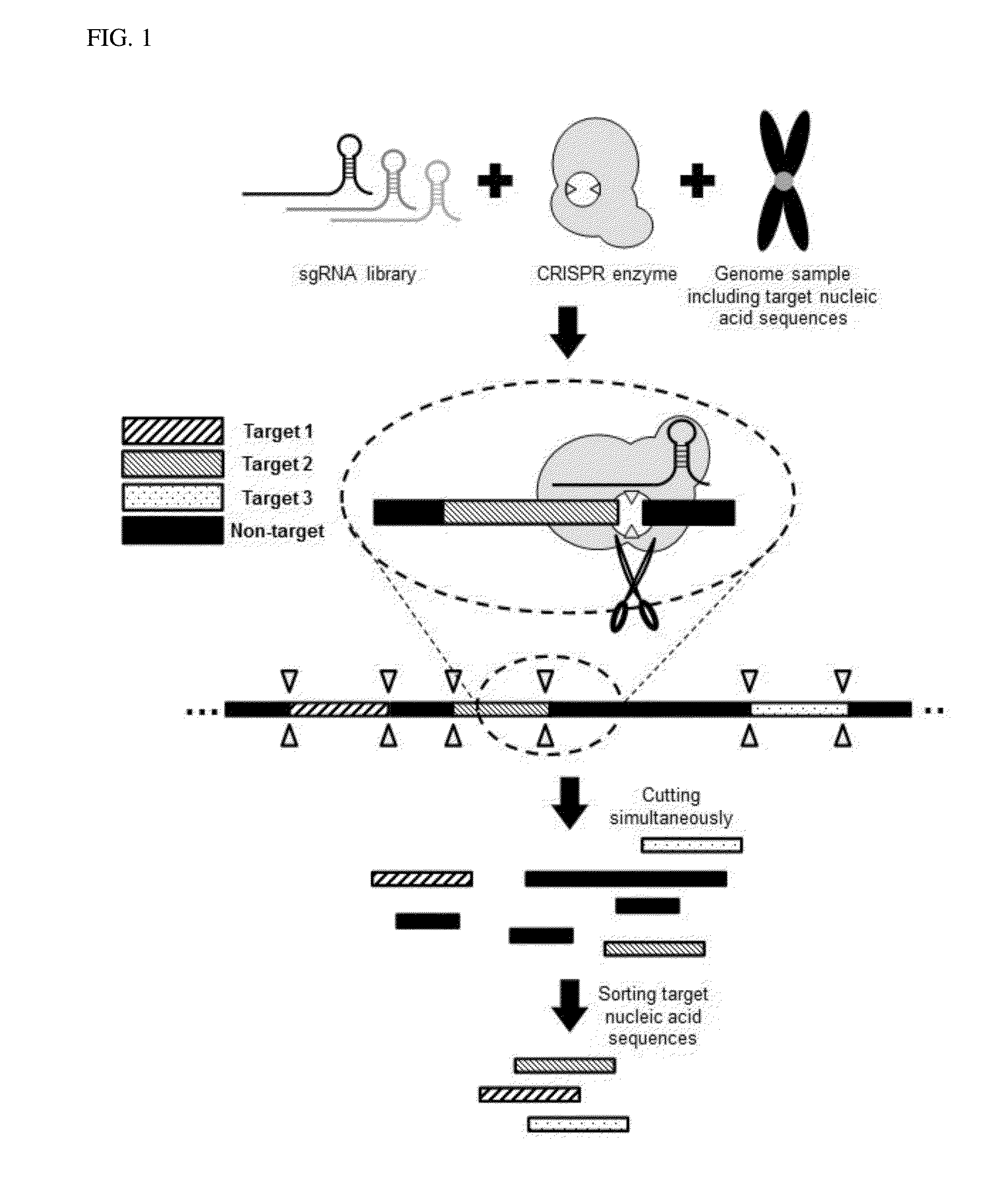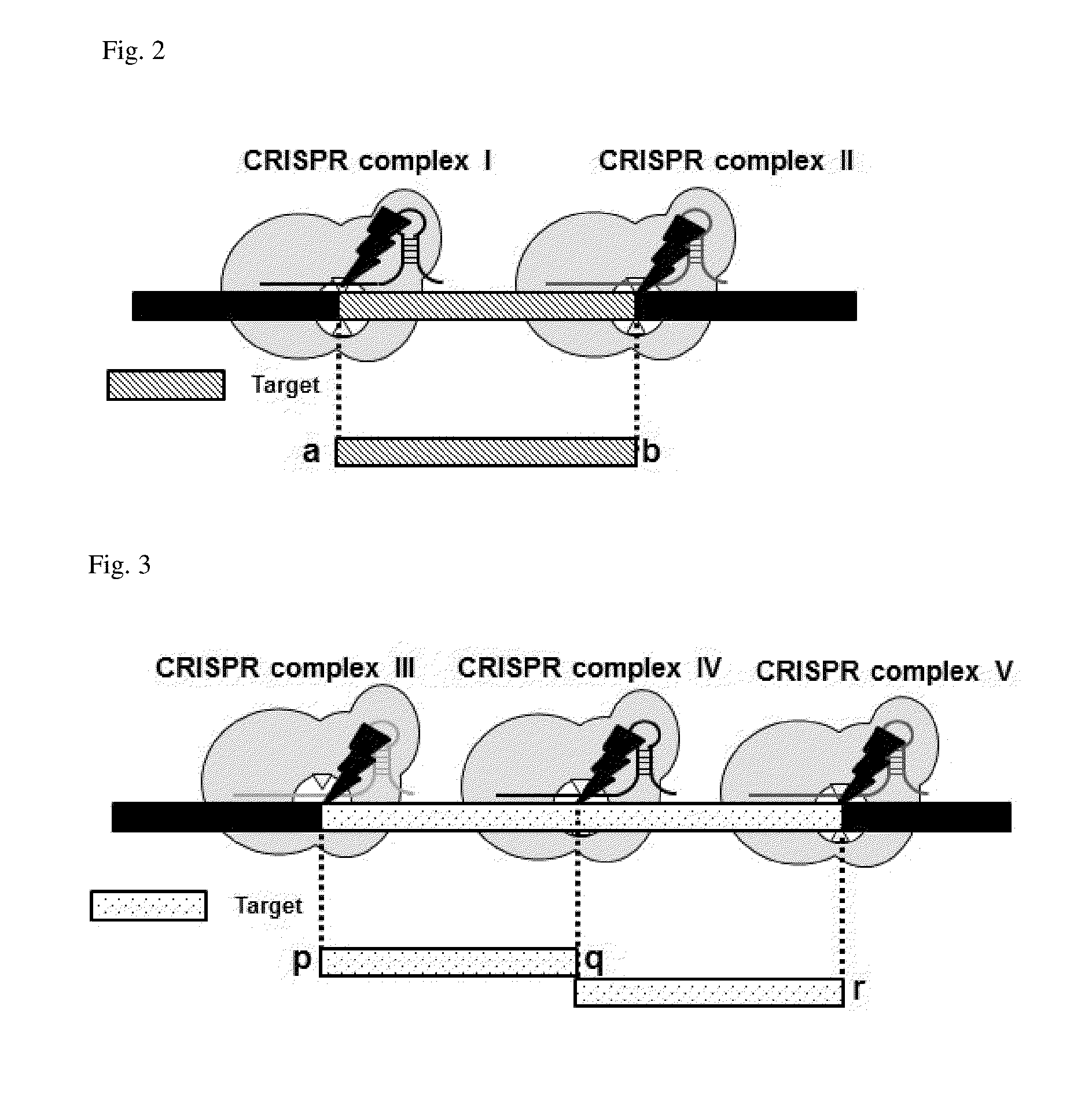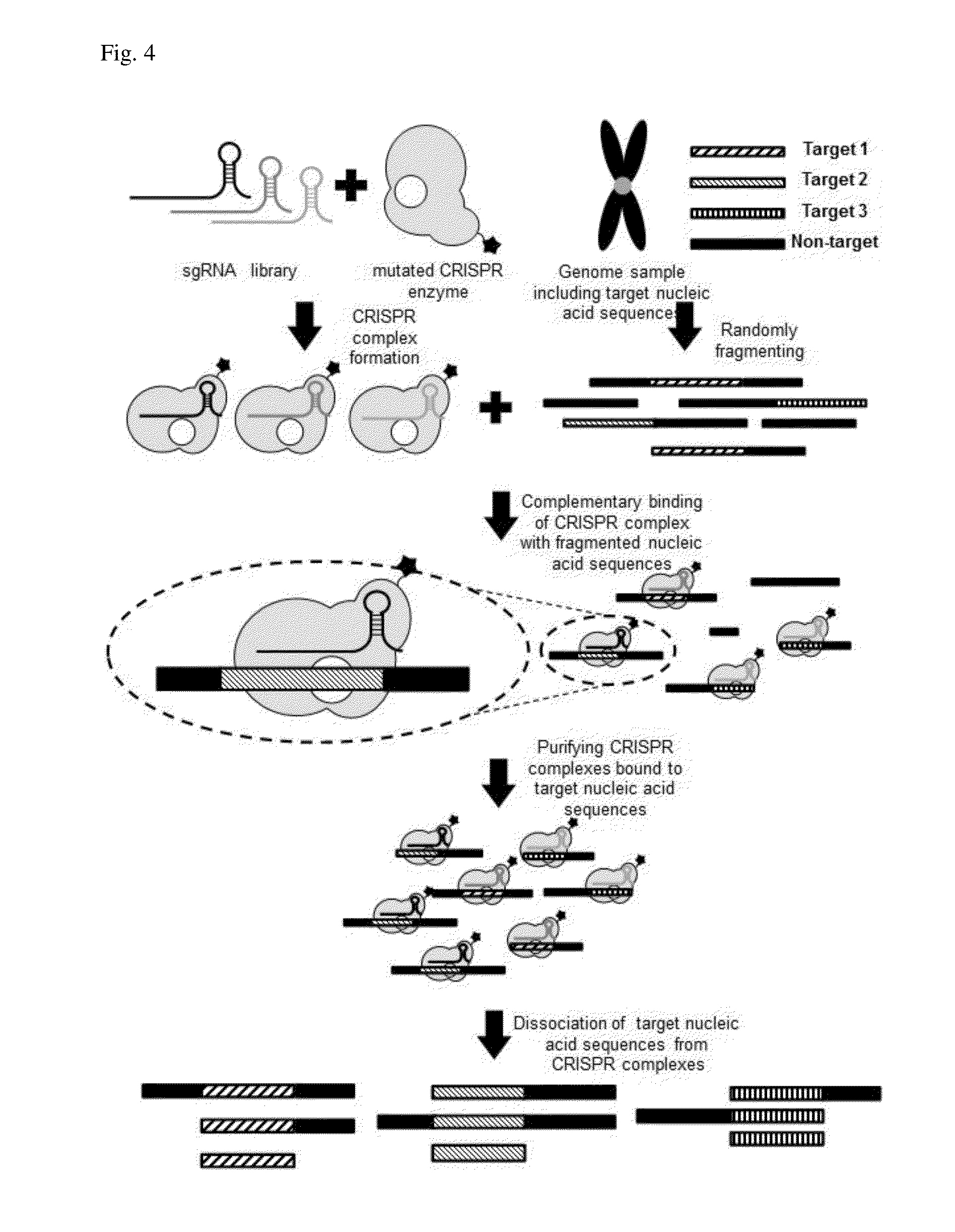Method for target DNA enrichment using crispr system
a technology of dna enrichment and crispr, which is applied in the field of capturing a target nucleic acid sequence in genome sequencing, can solve the problems of inability to achieve uniform amplification, inability to use, and inability to amplify all satisfactorily
- Summary
- Abstract
- Description
- Claims
- Application Information
AI Technical Summary
Benefits of technology
Problems solved by technology
Method used
Image
Examples
preparation example 1
Design and Preparation of CRISPR System RNAs for Capturing Genetic Sequences Located at Multiple Sites by Cleaving DNAs
[0079]CRISPR system RNAs used in the present invention are sgRNA. sgRNAs for cleaving both ends of target nucleic acid sequences are designed to recognize the upstream 18 bps of the base PAM sequence of a target region. In the present exemplary embodiment, ‘NGG’ (N=one of A, T, C, and G) was used as the PAM sequence. The NGG sequence is a PAM sequence that streptococcus pyogenes specifically recognizes, and it is sufficient that a random base among A, T, C, G is positioned ahead of GG.
[0080]The sgRNA whose binding site is designed as in the above was obtained from a template DNA by an in vitro transcription, and for this, the template DNA was combined with an sgRNA template sequence and a T7 promoter with 6 bp gap sequence which can initiate a transcription by binding with a T7 RNA polymerase. In this case, the T7 promoter employed has a sequence of ‘GGATTCTAATACGAC...
preparation example i-1-1
Synthesis of Two sgRNAs to Capture Portion of 1448014-1448256 of Chromosome 1
[0085]To capture the portion of 1448014-1448256 (SEQ ID NO: 5) in chromosome 1, ‘GAAAGAGTCCGATCCTCCGTTTTAGAGCTAGAAATAGCAAGTTAAAATA AGGCTAGTCCGTTATCAACTTGAAAAAGTGGCACCGAGTCGGTGCTTTTT TT’ (SEQ ID NO: 7) which is an sgRNA that recognizes ‘GGAGGATCGGACTCTTTC’ (SEQ ID NO: 6) that is a portion corresponding to 1448011-1448028 was synthesized to constitute the front portion, and ‘TACGCTTCCCTTGTTACGGTTTTAGAGCTAGAAATAGCAAGTTAAAATAA GGCTAGTCCGTTATCAACTTGAAAAAGTGGCACCGAGTCGGTGCTTTTTT T’ (SEQ ID NO: 9) which is an sgRNA that recognizes ‘CGTAACAAGGGAAGCGTA’ (SEQ ID NO: 8) that is a portion corresponding to 1448254-1448271 was synthesized to constitute the end portion.
preparation example i-1-2
Synthesis of Two sgRNAs to Capture Portion of 55537908-55538174 of Chromosome 1
[0086]To capture the portion of 55537908-55538174 (SEQ ID NO: 10) in chromosome 1, ‘TCATACCTCTCTTCTCAGGTTTTAGAGCTAGAAATAGCAAGTTAAAATAA GGCTAGTCCGTTATCAACTTGAAAAAGTGGCACCGAGTCGGTGCTTTTTT T’ (SEQ ID NO: 12) which is an sgRNA that recognizes ‘TCATACCTCTCTTCTCAG’ (SEQ ID NO: 11) that is the portion corresponding to 55537893-55537910 was synthesized to constitute the front portion, and ‘TTAAAAGCATCCCAAGTAGTTTTAGAGCTAGAAATAGCAAGTTAAAATA AGGCTAGTCCGTTATCAACTTGAAAAAGTGGCACCGAGTCGGTGCTTTTT TT’ (SEQ ID NO: 14) which is an sgRNA that recognizes ‘TTAAAAGCATCCCAAGTA’ (SEQ ID NO: 13) that is a portion corresponding to 55538160-55538177 was synthesized to constitute the end portion.
PUM
| Property | Measurement | Unit |
|---|---|---|
| temperature | aaaaa | aaaaa |
| pH | aaaaa | aaaaa |
| volume | aaaaa | aaaaa |
Abstract
Description
Claims
Application Information
 Login to View More
Login to View More - R&D
- Intellectual Property
- Life Sciences
- Materials
- Tech Scout
- Unparalleled Data Quality
- Higher Quality Content
- 60% Fewer Hallucinations
Browse by: Latest US Patents, China's latest patents, Technical Efficacy Thesaurus, Application Domain, Technology Topic, Popular Technical Reports.
© 2025 PatSnap. All rights reserved.Legal|Privacy policy|Modern Slavery Act Transparency Statement|Sitemap|About US| Contact US: help@patsnap.com



